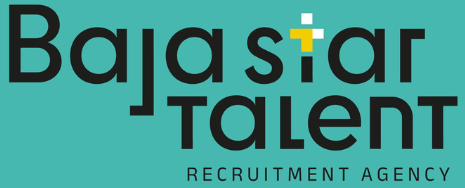It was inaugurated on August 15, 1914, and today, 6% of the world’s maritime trade passes through it. Its construction took 10 years, and 25,000 people died from diseases and accidents.

This Thursday, the Panama Canal celebrates 110 years of operation, a milestone filled with curiosities and anecdotes about the majestic interoceanic route, built by the United States after the failure of the French project.
Some interesting facts:
- The Canal and the Birth of a Nation: Panama’s independence from Colombia in 1903 is closely linked to the canal. After the Frenchman Ferdinand de Lesseps’ failed attempt to build it, the United States supported Panama’s separation and signed a treaty with the new country, acquiring lands and waters for the canal’s construction. After 10 years of work and an investment of $380 million, the canal was inaugurated on August 15, 1914, with the passage of the steamship Ancón. However, the construction claimed the lives of 25,000 people due to diseases and accidents. During the French phase in 1887, the painter Paul Gauguin nearly lost his life working on the construction.
- A State Within a State: Washington created the “Canal Zone,” an enclave with its own military bases and laws, where the U.S. flag flew. This led to decades of struggles by Panamanians to reunify the country and regain control of the canal. According to Ilya Espino, the canal’s deputy administrator, “The canal has represented many things over these 110 years: ingenuity, perseverance, sacrifice, and a great struggle for sovereignty.” In 1977, treaties signed between Omar Torrijos and Jimmy Carter allowed Panama to take control of the canal in 1999.
- An Elevator Shortcut: The 80 km-long canal connects the Pacific Ocean with the Caribbean Sea through locks that function like elevators, lifting ships 26 meters to the level of Gatun Lake before lowering them back to sea level. This engineering marvel revolutionized global navigation and trade, allowing ships to cross from one ocean to another in about 8 hours, saving thousands of kilometers of travel. Since its opening, the canal has only closed three times: in 1915 due to a landslide, in 1989 during the U.S. invasion, and in 2010 for 17 hours due to flooding. “We overcame the COVID-19 pandemic without closing a single day to global trade,” Espino highlights.
- The Golden Goose: The canal handles 6% of the world’s maritime trade and connects over 1,900 ports in 170 countries, with the United States, China, Japan, and South Korea being its main users. Between 2009 and 2016, the canal was expanded to accommodate neopanamax ships, capable of carrying up to 18,000 containers. The expansion has been crucial for Panama’s economy, contributing 6% of the country’s GDP and more than $25.7 billion to the treasury since 2000. In fiscal year 2023, the canal set a record by generating $2.544 billion, far surpassing the $1.878 billion collected during 85 years of U.S. administration. However, it now faces the threat of drought.
- The Freshwater Canal: Unlike the Suez Canal, the Panama Canal operates with freshwater, using an amount equivalent to two and a half times what a city like New York consumes for each ship transit. In 2023, the drought forced the daily number of transits to be reduced from 38 to 22, a situation that is beginning to improve. “While many countries have oil or gas, we depend on water, and nature has surprised us,” says Jorge Pitti, operations manager at the Cocolí lock. Authorities are considering building a reservoir to ensure the canal’s water supply, although this would require relocating more than 2,000 people. “The canal must restore its service reliability, and this can only be achieved by securing new water sources,” warns Quijano.
At Risk of Drying Up?
Panama’s President, José Raúl Mulino, stated that in 2025 he will “properly present” to the population the issue of creating a new water reservoir, known as Río Indio, which could solve the Panama Canal’s water crisis after resolving the issue with the mine, which was shut down following a court ruling.
According to an official statement, the Panamanian president “emphasized that the Río Indio reservoir issue will be properly presented to the country next year, once a new Social Security law is approved (also mired in a crisis due to the deficit in one of the two pension subsystems) and a solution is found to the problem with the Donoso mine.”
The “Donoso mine” refers to Minera Panama, a subsidiary of the Canadian company First Quantum Minerals (FQM), which ceased operations after the country’s Supreme Court declared “unconstitutional” the contract renewing the concession for 20 years, following an unprecedented wave of protests against the controversial document, which was considered harmful to the environment.
Mulino made this statement after meeting today with the Board of Directors of the Panama Canal Authority (ACP) “to gain a deeper understanding of the entity’s plans to ensure the sustainability and profitability of canal operations,” according to the official information. “I want the Canal issue to proceed calmly, without hostility,” the president expressed.
In that meeting, attended by the Canal administrator, Ricaurte Vásquez, and members of the Canal Authority’s Board of Directors, as well as several ministers, “alternatives were analyzed towards restructuring the Panama Canal’s watershed, with the aim of establishing a freshwater reservoir in the Río Indio.” The construction of a new reservoir in Río Indio is one of the plans being considered by the Panama Canal to address the water crisis that has affected it, which forced a progressive reduction in daily transits last year but has now returned to normal conditions thanks to the improvement in water levels in the two artificial lakes that supply it.
The Río Indio project is valued at more than $1.2 billion, with an additional $400 million for “sustainability,” and it would take about six years to complete, as explained at the time by the administrator of the Panama Canal Authority.
